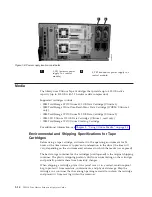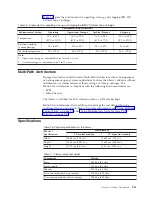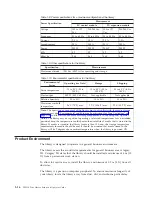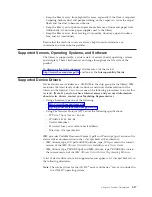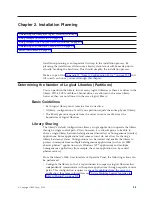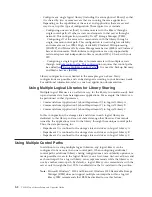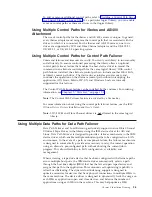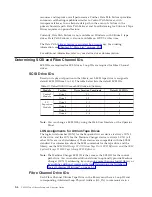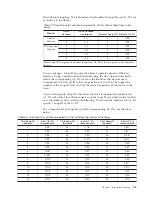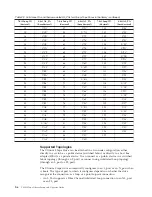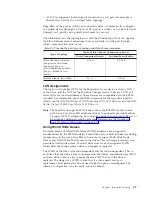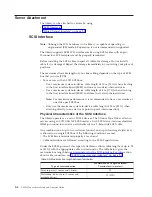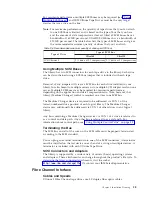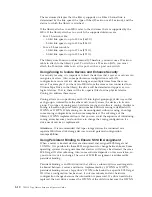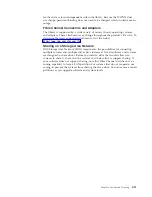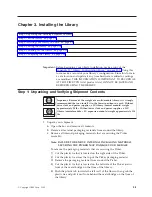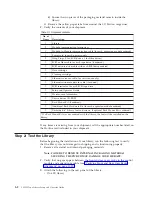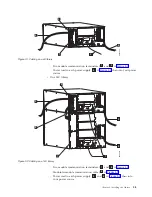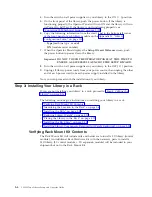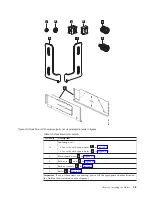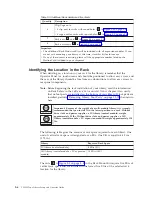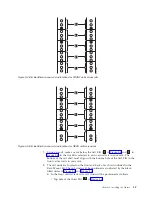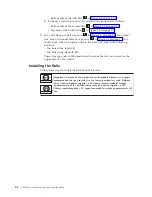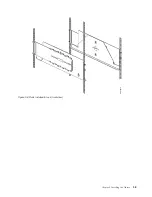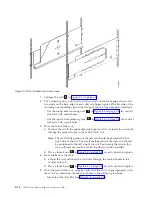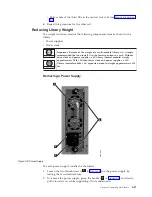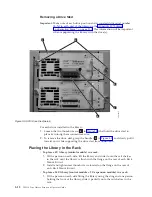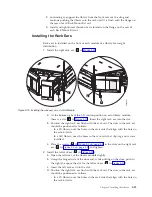
The
maximum
distances
that
the
library
supports
on
a
Fibre
Channel
link
is
determined
by
the
link
speed,
the
type
of
fiber
(50-micron
or
62.5-micron),
and
the
device
to
which
the
library
is
attached.
If
the
library
attaches
to
an
HBA,
refer
to
the
distances
that
are
supported
by
the
HBA.
If
the
library
attaches
to
a
switch,
the
supported
distances
are:
v
For
a
50-micron
cable:
–
1-Gbit
link
speed
=
up
to
500
m
(1640
ft)
–
2-Gbit
link
speed
=
up
to
300
m
(984
ft)
v
For
a
62.5-micron
cable:
–
1-Gbit
link
speed
=
up
to
175
m
(574
ft)
–
2-Gbit
link
speed
=
up
to
150
m
(492
ft)
The
library
uses
50-micron
cables
internally.
Therefore,
you
must
use
a
50-micron
cable
to
attach
to
the
library’s
port.
To
attach
to
a
62.5-micron
SAN,
you
must
attach
the
50-micron
cable
to
an
active
port,
such
as
a
port
on
a
switch.
Using
Zoning
to
Isolate
Devices
and
Enhance
Security
For
security
reasons,
it
is
important
to
limit
the
devices
that
a
server
or
servers
can
recognize
or
access.
Also,
some
performance
configurations
and
SAN
configurations
can
result
in
a
device
being
seen
multiple
times
from
the
same
server.
For
example,
if
you
have
two
HBAs
from
the
same
server
connected
to
an
Ultrium
Tape
Drive
in
the
library,
the
drive
will
be
detected
and
appear
as
two
logical
devices.
That
is,
there
will
be
two
special
files
for
one
physical
device.
Zoning
can
address
these
issues.
Zoning
allows
you
to
partition
your
SAN
into
logical
groupings
of
devices
so
that
each
group
is
isolated
from
the
other
and
can
only
access
the
devices
in
its
own
group.
Two
types
of
zoning
exist:
hardware
zoning
and
software
zoning.
Hardware
zoning
is
based
on
physical
fabric
port
number.
Software
zoning
is
defined
with
WWNN
or
WWPN.
While
zoning
can
be
reconfigured
without
causing
an
outage,
some
zoning
configurations
can
become
complicated.
The
advantage
of
the
library’s
WWNN
implementation
is
that
you
can
avoid
the
exposure
of
introducing
zoning
errors
because
you
do
not
have
to
change
the
zoning
configuration
if
a
drive
needs
service
or
replacement.
Attention:
It
is
recommended
that
tape
storage
devices
be
connected
on
a
separate
HBA
from
disk
storage
devices
to
avoid
potential
configuration
incompatibilities.
Using
Persistent
Binding
to
Ensure
SCSI
ID
Assignment
When
a
server
is
booted,
devices
are
discovered
and
assigned
SCSI
target
and
LUN
IDs.
It
is
possible
for
these
SCSI
assignments
to
change
between
boots.
Some
operating
systems
do
not
guarantee
that
devices
will
always
be
allocated
the
same
SCSI
target
ID
after
rebooting.
Also,
some
software
depends
on
this
association,
so
you
do
not
want
it
to
change.
The
issue
of
SCSI
ID
assignment
is
addressed
by
persistent
binding.
Persistent
binding
is
an
HBA
function
that
allows
a
subset
of
discovered
targets
to
be
bound
between
a
server
and
device.
Implemented
by
a
WWNN
or
WWPN,
persistent
binding
causes
a
tape
drive’s
WWN
to
be
bound
to
a
specific
SCSI
target
ID.
After
a
configuration
has
been
set,
it
survives
reboots
and
any
hardware
configuration
changes
because
the
information
is
preserved.
If
a
drive
needs
to
be
replaced,
the
new
drive
assumes
the
WWNN
of
the
old
drive
because
the
WWNN
2-10
TS3310
Tape
Library
Setup
and
Operator
Guide
Summary of Contents for System Storage TS3310
Page 1: ...IBM System Storage TS3310 Tape Library Setup and Operator Guide GA32 0477 00...
Page 2: ......
Page 3: ...IBM System Storage TS3310 Tape Library Setup and Operator Guide GA32 0477 00...
Page 6: ...iv TS3310 Tape Library Setup and Operator Guide...
Page 12: ...x TS3310 Tape Library Setup and Operator Guide...
Page 14: ...xii TS3310 Tape Library Setup and Operator Guide...
Page 22: ...xx TS3310 Tape Library Setup and Operator Guide...
Page 24: ...xxii TS3310 Tape Library Setup and Operator Guide...
Page 42: ...1 18 TS3310 Tape Library Setup and Operator Guide...
Page 54: ...2 12 TS3310 Tape Library Setup and Operator Guide...
Page 63: ...a66ug019 Figure 3 6 Rails installed in rack front view Chapter 3 Installing the Library 3 9...
Page 78: ...3 24 TS3310 Tape Library Setup and Operator Guide...
Page 86: ...4 8 TS3310 Tape Library Setup and Operator Guide...
Page 98: ...5 12 TS3310 Tape Library Setup and Operator Guide...
Page 106: ...6 8 TS3310 Tape Library Setup and Operator Guide...
Page 220: ...11 22 TS3310 Tape Library Setup and Operator Guide...
Page 226: ...12 6 TS3310 Tape Library Setup and Operator Guide...
Page 236: ...A 10 TS3310 Tape Library Setup and Operator Guide...
Page 240: ...B 4 TS3310 Tape Library Setup and Operator Guide...
Page 266: ...F 8 TS3310 Tape Library Setup and Operator Guide...
Page 273: ......
Page 274: ...Part Number 95P2271 Printed in USA GA32 0477 00 1P P N 95P2271...

